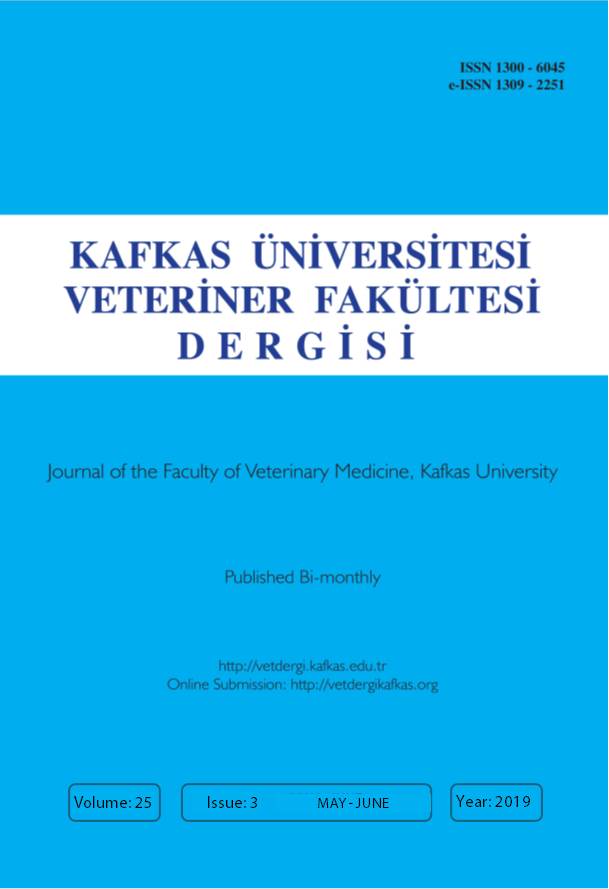
This journal is licensed under a Creative Commons Attribution-NonCommercial 4.0 International License
Kafkas Üniversitesi Veteriner Fakültesi Dergisi
2019 , Vol 25 , Issue 3
Evaluation of VEGF, Cytokeratin-19 and Caspase 3 Immunolocalization in the Lung Tissue of Rat with Experimentally İnduced Diabetes
1Cumhuriyet University, Faculty of Medicine, Department of Histology Embryology, TR-58140 Sivas - TURKEY
DOI :
10.9775/kvfd.2018.21141
Diabetes Mellitus (DM) manifests itself with changes in the functional structure of the lungs and impairments in gas exchange. These changes
in diabetic lung tissue may be due to various factors. Our aim in this study is to correlate the damage of diabetes with lung tissue in terms of
VEGF, CK19, caspase 3 immunolocalizations. In this study, animals were divided into 4 groups, 60 mg/kg streptozotocin was given to each of the
groups with experimental diabetes and the physiological saline solution was given intraperitoneally to the control group. On days 7 and 14 of the
experiment, diabetic and control groups were euthanized, and lung tissues were removed. Tissue samples were evaluated histochemically and
immunohistochemically by monitoring with standard light microscopy. In the diabetic group, the localization of CK19 and Caspase 3 increased
on the 7th and 14th days compared to the control group, but the immunolocalization of VEGF decreased. Based on our findings, it was determined
that lung tissue was one of the target organs of diabetes. The increase in pulmonary parenchyma due to hyperglycemia is accepted as a source
of fibrosis. We concluded that due to increased CK19 localization of fibrosis source, decreased VEGF localization has increased apoptosis in the
pulmonary capillary endothelium, which has a significant role in the blood-air barrier in the lung parenchyma, especially in endothelial cells.
Keywords :
Experimental diabetes, Lung, CK19, VEGF, Caspase 3










